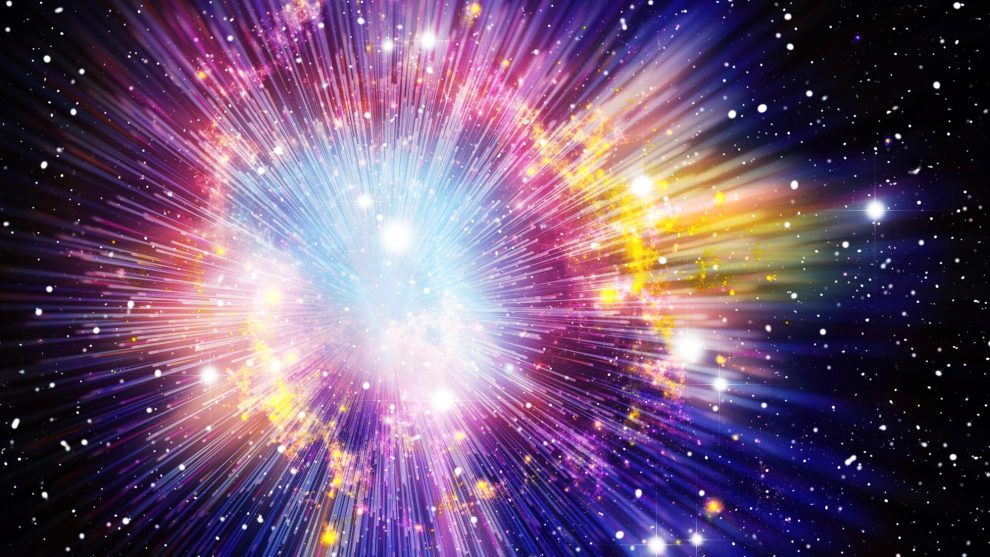The Big Bang theory stands as one of the most influential scientific concepts of our time, providing a framework for understanding the origin and evolution of the universe. It reveals the story of a cosmic explosion that set in motion the creation of galaxies, stars, and all the matter and energy we observe today. In this blog post, we will delve into the fascinating world of the Big Bang, exploring its key principles, supporting evidence, and its profound implications for our understanding of the cosmos.
I. The Big Bang Theory:
- Definition and Concept: The Big Bang theory proposes that the universe originated from a singularity—an infinitely dense and hot point—approximately 13.8 billion years ago. It suggests that the universe has been expanding and evolving ever since.
- Expansion of Space: According to the theory, space itself has been continuously expanding since the moment of the Big Bang, carrying galaxies and other celestial objects with it.
II. Supporting Evidence for the Big Bang:
- Cosmic Microwave Background (CMB): The discovery of the CMB radiation in 1965 provided strong evidence for the Big Bang. This faint radiation, present throughout the universe, is a remnant of the intense heat of the early universe and supports the idea of a hot, dense beginning.
- Redshift and Hubble’s Law: Observations of distant galaxies show a redshift—a shift of light towards longer wavelengths—which indicates that galaxies are moving away from us. Hubble’s Law, based on these observations, supports the expansion of the universe and provides further evidence for the Big Bang.
- Abundance of Light Elements: The Big Bang theory accurately predicts the observed abundances of light elements like hydrogen and helium in the universe. The early universe’s conditions were suitable for the formation of these elements, supporting the idea of a hot and dense beginning.
III. Timeline of the Universe:
- Planck Epoch: The universe’s earliest moments, up to approximately 10^(-43) seconds after the Big Bang, remain a realm of speculation due to extreme conditions. The laws of physics, as we understand them today, cannot describe this period accurately.
- Inflationary Epoch: During the inflationary period, which lasted for a tiny fraction of a second, the universe expanded exponentially, smoothing out irregularities and setting the stage for the formation of structures.
- Electroweak Epoch: As the universe cooled further, elementary particles and forces began to differentiate. The electromagnetic and weak nuclear forces became distinct entities.
- Particle Era: During this phase, lasting from a few seconds to about 380,000 years after the Big Bang, the universe consisted of a hot plasma of elementary particles. It was during this era that photons decoupled from matter, leading to the formation of the CMB radiation.
- Formation of Structures: Over millions of years, gravity caused matter to clump together, leading to the formation of galaxies, stars, and other cosmic structures.
IV. Implications of the Big Bang:
- Expansion of the Universe: The Big Bang theory explains the observed expansion of the universe, as well as the correlation between distance and redshift in the light from distant galaxies.
- Origin of the Elements: The theory accurately accounts for the abundance of light elements in the universe, providing insights into the processes that formed these elements in the early universe.
- Cosmic Evolution: The Big Bang theory offers a framework for understanding the evolution of the universe from its early hot and dense state to the formation of galaxies, stars, and planets.
- Cosmic Microwave Background: The existence of the CMB radiation provides tangible evidence for the early hot phase of the universe and supports the concept of an expanding universe.
V. Unsolved Questions and Future Research:
- Dark Matter and Dark Energy: The nature of dark matter and dark energy, which collectively account for a significant portion of the universe’s mass and energy, remains unknown. Further research aims to unravel their properties and understand their role in the evolution of the universe.
- Singularity and Quantum Gravity: Understanding the singularity that initiated the Big Bang and reconciling the theory of gravity (general relativity) with quantum mechanics are ongoing challenges in theoretical physics.
Conclusion: The Big Bang theory stands as a cornerstone of modern cosmology, unraveling the secrets of our universe’s origins and evolution. Supported by robust evidence and ongoing research, this remarkable scientific framework continues to shape our understanding of the cosmos, inspiring new questions and discoveries that deepen our fascination with the mysteries of the universe.




















Add Comment